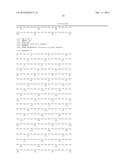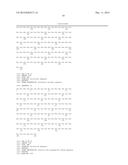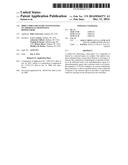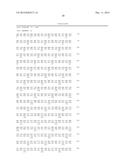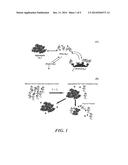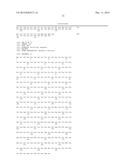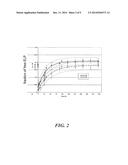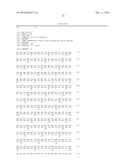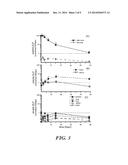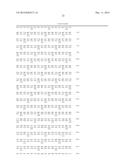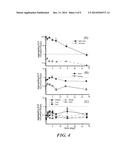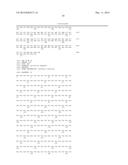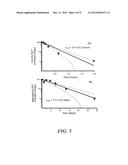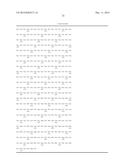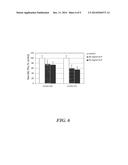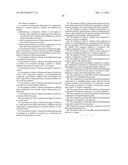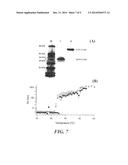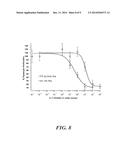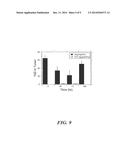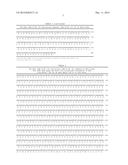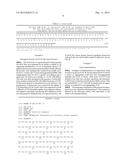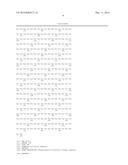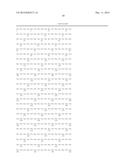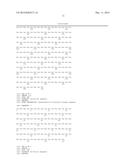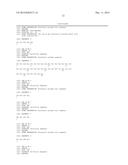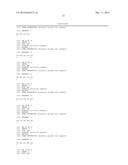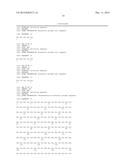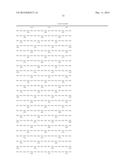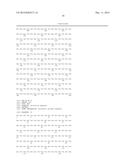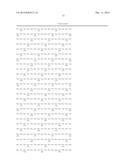Patent application title: DIRECT DRUG DELIVERY SYSTEM BASED ON THERMALLY RESPONSIVE BIOPOLYMERS
Inventors:
Lori A. Setton (Durham, NC, US)
Ashutosh Chilkoti (Durham, NC, US)
Virginia B. Kraus (Hillsborough, NC, US)
Helawe Betre (Durham, NC, US)
Matthew R. Dreher (Durham, NC, US)
IPC8 Class: AA61K4748FI
USPC Class:
514 168
Class name: Peptide (e.g., protein, etc.) containing doai bone affecting osteoarthritis
Publication date: 2014-12-11
Patent application number: 20140364371
Abstract:
A method for delivering a drug depot of a compound of interest to a
selected region in a subject. The method comprises administering a
composition directly to said region of interest, the composition
comprising the compound of interest to be delivered (such as an
antiinflammatory agent or a chemotherapeutic agent) and a polymer (such
as an elastin-like peptide or ELP) that undergoes an inverse temperature
phase transition, so that a sustained release of the compound of interest
at the selected region is provided. Compositions useful for carrying out
the invention are also described.Claims:
1. A method for delivering a drug depot of a compound of interest to a
selected region in a subject, said method comprising: administering a
composition directly to said region of interest, said composition
comprising said compound to be delivered and a polymer that undergoes an
inverse temperature phase transition; so that a sustained release of said
compound of interest at said selected region is provided; wherein said
polymer has a transition temperature (Tt) less than the body temperature
of said subject.
2. The method of claim 1, wherein said composition aggregates in the region of interest and then gradually disaggregates, thereby providing said sustained release of said compound of interest at said selected region.
3. The method of claim 1, wherein said administering step is carried out by injection.
4. The method of claim 1, wherein said administering step is carried out by injection through a needle or cannula, wherein said needle or cannula is of 7 to 33 gauge.
5. The method of claim 1, wherein said region of interest is a joint.
6. The method of claim 1, wherein said region of interest is a joint, said compound of interest is an antiinflammatory compound, said patient is afflicted with osteoarthritis, and said composition is administered in an amount effective to treat said osteoarthritis.
7. The method of claim 1, wherein said administering step is carried out by intra-articular injection.
8. The method of claim 1, wherein said patient is afflicted with diarthrodial joint disorder and/or intervertebral disc pathology.
9. The method of claim 1, wherein said region of interest is an intervertebral disc space.
10. The method of claim 1, wherein said region of interest is a solid tumor.
11. The method of claim 1, wherein said region of interest is a solid tumor with which said subject is afflicted, and said composition is administered in an amount effective to treat said solid tumor.
12. The method of claim 1, wherein said administering step is repeated on a plurality of occasions at a frequency not greater than three times a month.
13. The method of claim 1, wherein said composition comprises said compound to be delivered conjugated to said polymer that undergoes an inverse temperature phase transition.
14. The method of claim 1, wherein said polymer is a bioelastic polymer, said bioelastic polymer comprising elastomeric units selected from the group consisting of bioelastic pentapeptides, tetrapeptides, and nonapeptides.
15. The method of claim 1, wherein said compound of interest is a protein or peptide.
16. The method of claim 1, wherein said compound of interest is an antiinflammatory compound selected from the group consisting of TNF blocking antibodies, IL-1 antibodies, soluble TNF receptors, soluble IL-1 receptors, TNF receptor antagonists, and IL-1 receptor antagonists.
17. The method of claim 1, wherein said compound of interest is recombinant human IL-1 receptor antagonist.
18. The method of claim 1, wherein said therapeutic compound is conjugated to said polymer.
19. The method of claim 1, wherein said therapeutic compound is mixed with said polymer.
20. A pharmaceutically acceptable composition comprising a therapeutic compound in combination with a polymer that undergoes an inverse temperature phase transition.
21. The composition of claim 20, wherein said therapeutic compound is selected from the group consisting of antiinflammatory agents and chemotherapeutic agents.
22. The composition of claim 20, wherein said therapeutic compound is an antiinflammatory agent.
23. The composition of claim 20, wherein said therapeutic compound is an antiinflammatory agent selected from the group consisting of TNF antibodies, IL-1 antibodies, soluble TNF receptors, soluble IL-1 receptors, TNF receptor antagonists, and IL-1 receptor antagonists.
24. The composition of claim 20, wherein said therapeutic compound is recombinant human IL-1 receptor antagonist
25. The composition of claim 20, wherein said therapeutic compound is a chemotherapeutic agent.
26. The composition of claim 20, wherein said therapeutic compound is conjugated to said polymer.
27. The composition of claim 20, wherein said therapeutic compound is mixed with said polymer.
28. An injection device containing a composition of claim 20 in sterile injectable form.
29. The injection device of claim 28, wherein said injection device is a syringe.
Description:
RELATED APPLICATIONS
[0001] This application is a continuation of application Ser. No. 11/472,113, filed Jun. 21, 2006, which claims the benefit of U.S. Provisional Application Ser. No. 60/693,966, filed Jun. 24, 2005, the disclosures of which are hereby incorporated by reference in their entirety.
DESCRIPTION OF THE TEXT FILE SUBMITTED ELECTRONICALLY
[0003] The contents of the text file submitted electronically herewith are incorporated herein by reference in their entirety: A computer readable format copy of the Sequence Listing (filename: PHAS--004--01US_SeqList.txt, date recorded: Apr. 18, 2011, file size 47 kilobytes).
FIELD OF THE INVENTION
[0004] The present invention concerns methods and compositions for the controlled released delivery of pharmaceutical compounds.
BACKGROUND OF THE INVENTION
[0005] Osteoarthritis (OA) is a degenerative joint disease that affects more patients than any other musculoskeletal disorder. It accounts for over 4 million hospitalizations every year and its prevalence is estimated to increase by over 50% in the next 20 years. OA affects individual joints and was historically considered to arise from a "wear and tear" due to joint loading. OA is now understood to arise from multiple causes, including biochemical, genetic and biomechanical factors, that interact and promote the progression of joint disease. While surgical options for joint re-alignment (osteotomy), prosthetic replacement (arthroplasty), or fusion (arthrodesis) are available to patients with advanced joint degeneration, only a small fraction of patients need operative treatments. Hence, there is a great and increasing need to provide non-surgical treatments that are capable of both alleviating patient symptoms and modifying the course of disease progression.
[0006] The most widely available treatments for the patient with early to moderate joint disease are the chronic use of NSAIDs. Although these drugs provide effectiveness in pain relief, they are associated with frequent adverse conditions including gastrointestinal bleeding and ulceration. Additionally. NSAIDs are reported to inhibit cell biosynthesis which may compromise the long-term intrinsic repair process in joint degeneration. More recently protein drugs with the ability to modify the disease state of OA have been identified. These protein drugs include TNF-a inhibitors and IL-1 inhibitors have shown significant promise both in preclinical and clinical studies in preventing the onset and retarding the progression of the disease.
[0007] Since OA is a disease that is localized to a few joints at a time, localized delivery of the therapeutic is highly preferred. One such technique is the administration of the drug directly into the affected joint cavity, i.e. intra-articular injection, which is currently recommended for corticosteroids and hyaluronan solutions in treating OA. Although the intra-articular mechanism of drug delivery is attractive to the patient and clinician alike, it is compromised by the presence of a highly efficient lymphatic system that rapidly clears molecules from the synovial cavity. Consequently, the therapeutic drug has to be administered frequently or at high concentrations to be effective. This, in turn, may be costly and result in adverse side effects and high levels of patient discomfort. Controlled drug delivery systems have been sought-after to overcome these challenges.
[0008] U.S. Pat. No. 6,328,996 to Urry describes bioelastomeric drug delivery systems, but does not suggest them for administration directly into a region of interest.
SUMMARY OF THE INVENTION
[0009] An objective of the present invention is to provide a thermally responsive biocompatible polymer for the sustained delivery of drags such as IL-1 receptor antagonist. The delivery system in the present invention utilizes the unique rapid aggregation and slow disaggregation properties of thermally responsive biopolymers to deliver protein drugs directly to a pathologic site, such as an OA affected joint.
[0010] The present invention provides a method for delivering a drug depot of a compound of interest to a selected region in a subject. The method comprises administering a composition directly to said region of interest, the composition comprising said compound to be delivered and a polymer that undergoes an inverse temperature phase transition, so that a sustained release of said compound of interest at said selected region is provided.
[0011] In some embodiments the present invention provides a method for delivering a drug depot of a compound of interest to a selected region in a subject (e.g., a joint or synovial joint). The method comprises administering a composition to region of interest (e.g., directly, such as by injection in or to the region of interest). The composition comprises the compound to be delivered and a polymer that undergoes an inverse temperature phase transition. The polymer has a transition temperature (Tt) less than the body temperature of the subject (e.g., less than 37° C.). The composition or conjugate aggregates in the region of interest and then gradually disaggregates, providing a sustained or controlled release of the compound of interest at the selected region.
[0012] In some embodiments the present invention provides a method for delivering a drug depot of a compound of interest to a selected region in a subject, said method comprising: administering a composition directly to said region of interest, said composition comprising said compound to be delivered and a polymer that undergoes an inverse temperature phase transition; wherein said polymer has a transition temperature (Tt) less than the body temperature of said subject: so that said composition (or said conjugate) separates from solution in said region of interest to form a bulk aggregate, and then gradually separates from bulk aggregate to go back to solution, providing a sustained release of said compound of interest at said selected region (or stated differently, so that said conjugate separates from solution in said region of interest and then gradually goes back to solution phase, providing a sustained release of said compound of interest at said selected region).
[0013] In some embodiments the composition comprises the compound to be delivered conjugated to the polymer; in other embodiments the composition comprises the compound to be delivered mixed with, but not otherwise conjugated to or chemically coupled to, the polymer.
[0014] A further aspect of the invention is a pharmaceutically acceptable composition comprising a therapeutic compound in combination with (e.g., mixed with or conjugated to) a polymer that undergoes an inverse temperature phase transition. Examples of such therapeutic compounds include but are not limited to TNF antibodies, IL-1 antibodies, soluble TNF receptors, soluble IL-1 receptors, TNF receptor antagonists, and IL-1 receptor antagonists, with a particular example being recombinant human IL-1 receptor antagonist and its isoforms.
[0015] A further aspect of the invention is an injection device (including syringes and other injection devices) containing a composition as described herein.
[0016] A further aspect of the invention is the use of an injection device as described herein for carrying out a method as described herein.
BRIEF DESCRIPTION OF THE DRAWINGS
[0017] FIG. 1. Schematic illustrating examples of one embodiment of a proposed drug delivery system. Panel (A) shows the concept for ELP fusion proteins. Coil represents ELP and solid arrow represents compound attached to ELP. The compound is free to bind to a receptor when the fusion protein is freed from the aggregate. A compound (thug) attached to a thermosensitive bioelastic polymer (ELP) may be injected into a tissue region (e.g., joint cavity), and the release of the compound occurs over time from aggregate. In its free form, the compound is available to bind to a receptor as shown. The "free" fraction of compound-bioelastic polymer will be cleared from the tissue region (e.g., joint cavity) over time. Panel (B) shows the concept for entrapment or retention of compound in aggregating ELP. Alternate example showing a compound initially mixed with a thermosensitive bioelastic polymer during or prior to delivery to a tissue region, promoting entrapment of the compound. The release of the compound occurs over time, with the "free" compound cleared from the tissue region over time.
[0018] FIG. 2. Fraction of ELP detected in supernatant over time, following equilibration of an ELP aggregate at 37° C. Results are shown for ELP4-90 ([(VPGVG)10]9, SEQ ID NO:1) and ELP4-120 ([(VPGVG)10]12, SEQ ID NO:2) (mean±SD, n=4). ELP above its transition temperature was equilibrated at 37° C. to promote the inverse temperature phase transition. Supernatant was replaced with fresh PBS at 37° C. and ELP concentration in aliquots of supernatant was quantified over time by absorbance at 280 nm. Data were fit to a first-order exponential function (solid line) of the form [ELP]=[ELP]ss-A exp(-t/τ), to obtain a time constant of equilibration (τ) and a fraction of ELP not contained in aggregate form at equilibrium ([ELP]ss). For ELP4-90, constants were found to be: [ELP]ss=0.21 and τ=31 h. For ELP4-120, constants were found to be: [ELP]ss=0.18 and τ=43 h.
[0019] FIG. 3. Biodistribution of non-aggregating [14C]ELP (Tt>50° C.) after intra-articular injection into the right knee joint in a rat model. The injected dose (ID/gm) is amount of 14C recovered from the injected knee compartment (per gram of recovered tissues and fluids) at 10 min post injection. For individual compartments, 14C (per gram of recovered tissue or fluid) was normalized by this value to determine a % ID/gm for each tissue or fluid. All data expressed as mean±SE (n=5). Panel (A), *p<0.05, statistically different from time zero; +p<0.05, statistically different from uninjected (left) knee compartment. Panel (B), *p<0.05, statistically different from time zero; +p<0.05, statistically different from blood. Panel (C), the concentration of [14C]ELP was found to be below 1% ID/gm for all organs, and these tissues were not found to be statistically different from the uninjected (left) knee at all time points.
[0020] FIG. 4. Biodistribution of the aggregating [14C]ELP (Tt<35° C.) after intra-articular injection into the right knee joint of a rat model. The injected dose (ID) is amount of 14C recovered from the injected knee compartment (per gram of recovered tissues and fluids) at time zero (10 min post injection). For individual compartments, 14C (per gram of recovered tissue or fluid) was normalized by this value to determine a % ID/gm for each tissue or fluid. All data expressed as mean±SE (n=5). Panel (A), *p<0.05, statistically different from time zero; +p<0.05, statistically different from uninjected (left) knee compartment. Panel (B), *p<0.05, statistically different from time zero; +p<0.05, statistically different from blood. Panel (C), the concentration of [14C]ELP was found to be below 1% ID/gm for all organs, and these tissues were not found to be statistically different from the uninjected (left) knee at all time points.
[0021] FIG. 5. Biodistribution of [14C]ELP in the injected joint compartment over time. The injected dose (ID/gm) is amount of 14C recovered from the injected knee compartment (per gram of recovered tissues and fluids) at time zero (10 min post injection); ID/gm at subsequent time points was normalized by this value to determine a % ID/gm for the knee joint compartment as a function of time. Panel (A), non-aggregating ELP (Tt>50° C.). Panel (B), aggregating ELP (Tt<35° C.). Data expressed as mean±SE (n=5) were fit to a first-order exponential decay function (solid-line) and plotted on a semi-log axis. Confidence intervals (95%, dashed lines) are also shown. The time constant (τ) for each fit was used to calculate the joint half-life of the two ELP types [t1/2=τ ln(2)).
[0022] FIG. 6. Results for quantifying radiolabeled compound released to solution after mixing with ELP in vitro. [3H]rhIL1Ra at 2.5 micrograms/ml was mixed with different ELP formulations of different concentrations at 37° C. (ELP4-120 ([(VPGVG)10]12, SEQ ID NO:2) and ELP5 ([(VPGVG)6(VPGKG)]16, SEQ ID NO:3)). ELP solutions were prepared at concentrations of 0 mg/ml (control), 20, and 50 mg/ml in a total reaction volume of 200 microliters. The ELP-IL1Ra mixture was observed to complex into an aggregate. Aliquots of supernatant (5 microliters) were assayed over time for [3H] via scintillation counting as a measure of rhIL1Ra concentration in the supernatant. Measurements were normalized to control (0 mg/ml, hollow bar) to determine a % free rhIL1Ra in solution=(CPM of sample/CPM of control)×100. Data are stable within 24 h of entrapment; data shown here at 96 hours of equilibration (n=5, mean+SD). Results indicate that the ELPs are able to entrap between 25-55% of this compound upon mixing.
[0023] FIG. 7. Panel (A), SDS-PAGE of two fusion proteins after two rounds of thermal purification. Panel (B), Aggregation and particle size of the two fusion proteins with temperature were similar as determined by dynamic light scattering, showing the formation of large (>100 nm) particles beginning at a temperature below 37° C.
[0024] FIG. 8. Inhibition of Con A induced IL-1 dependent primary murine thymocytes proliferation by rhIL1Ra or ELP4-IL1Ra fusion protein. Cells cultured for 48 hours with 1 ng/ml murine IL-1β and increasing concentrations of fusion-protein or rhIL1Ra. Data presented as semi-log plots with the percentage of control proliferation vs. the amount of IL-1 inhibitor added in molar excess over the amount of IL-1β present. Mean±SD (n=6), data fit to a sigmoid function to determine the IC50 for each protein.
[0025] FIG. 9. Percent injected dose (% ID) in a tumor of aggregating (solid bar) and non-aggregating (hatched bar) ELPs. Both types of ELPs were infused (4 μL/min) into a human squamous cell carcinoma (FaDu) tumor on the leg of a nude mouse (Balb/c nu/nu). Data are mean±SEM, n=1 to 9.
DETAILED DESCRIPTION OF THE PREFERRED EMBODIMENTS
[0026] "Bioelastic polymer" as used herein refers to compounds that comprise repeating elastomeric units. The elastomeric units are typically pentapeptides, tetrapeptides, of nonapeptides. Examples are elastin-like polypeptides or "ELPs".
[0027] "Subjects" as used herein includes human subjects (including both male and female subjects and including juvenile, adolescent, adult, and geriatric subjects), as well as animal subjects, particularly other mammalian subjects such as primates, dogs, cats, and horses, for veterinary purposes.
[0028] "Arthritis" as used herein means any type of arthritis, including but not limited to rheumatoid arthritis, osteoarthritis, and ankylosing spondylitis.
[0029] "Aggregate" as used herein means a collection or agglomeration of a plurality of molecules such that a particle is formed.
[0030] "Dis-aggregation" as used herein means a separation of molecule or molecules from an aggregate, a progressive diminishing of aggregate size; or a progressive diminishing of particle size.
[0031] "Region of interest" as used herein may be any region of interest, including but not limited to joints and solid tumors ("solid tumor" including the resection cavities within solid tumors after surgical removal of the primary mass thereof and into which the compositions of the invention may be directly administered). In some embodiments of joint administration, the region of interest is an intervetebral disk space or a related spinal joint structure.
[0032] "Body temperature" as used herein includes both core body temperature and regional body temperature (e.g., the temperature of an extremity when a region of interest such as a joint is located in an extremity).
[0033] "Joint" as used herein refers to a movable point where two bones meet, often a synovial joint or syndesmosis, and including but not limited to ball and socket joints, ellipsoidal joints, gliding joints, hinge joints, pivot joints and saddle joints. Such joints may be located in, for example, the shoulder, neck, spine, elbow, hip, wrist, hand, knee, ankle, or foot.
[0034] "Solid tumor" as used herein may be any solid tumor or cancer, including but not limited to primary and secondary (or metastatic) solid tumors of lung cancer, liver cancer, prostate cancer, ovarian cancer, colon cancer, skin cancer (including melanoma), brain cancer, etc.
[0035] "Injection" or "injecting" as used herein may be carried out by any suitable means through a needle, syringe, shunt, cannula (e.g., of 7-33 gauge) or any other suitable device that delivers the composition to be delivered directly into the region of interest (in contrast to and not including systemic delivery), as a single bolus or as an infusion over time.
[0036] "Antibody" or "antibodies" as used herein refers to all types of immunoglobulins, including IgG, IgM, IgA, IgD, and IgE. The term "immunoglobulin" includes the subtypes of these immunoglobulins, such as IgG1, IgG2, IgG3, IgG4, etc. Of these immunoglobulins, IgM and IgG are preferred, and IgG is particularly preferred. The antibodies may be of any species of origin, including (for example) mouse, rat, rabbit, horse, or human, or may be chimeric antibodies. The term "antibody" as used herein includes antibody fragments which retain the capability of binding to a target antigen, for example, Fab, F(ab')2, and Fv fragments, and the corresponding fragments obtained from antibodies other than IgG. Such fragments are also produced by known techniques.
[0037] "Chemotherapeutic agent" (or "anticancer agent") as used herein includes but is not limited to methotrexate, daunomycin, mitomycin, cisplatin, vincristine, epirubicin, fluorouracil, verapamil, cyclophosphamide, cytosine arabinoside, aminopterin, bleomycin, mitomycin C, democolcine, etoposide, mithramycin, chlorambucil, melphalan, daunorubicin, doxorubicin, tamosifen, paclitaxel, vincristin, vinblastine, camptothecin actinomycin D, and cytarabine.
[0038] The disclosures of all United States patent references cited herein are to be incorporated by reference herein in their entirety.
[0039] Compounds of interest. Any suitable compound, including but not limited to proteins and peptides, may be coupled to the polymer (e.g., via chemical bond or production as a fusion protein) or mixed with the polymer as noted above. In general, the compounds of interest may be detectable groups or a therapeutic group.
[0040] For example, the compound of interest may be selected from the group of bone morphogenetic proteins, peptides, and growth factors, more particularly human calcitonin analogs, osteogenic growth peptides, and osteogenic growth peptide-human calcitonin analog hybrids. See, e,g., U.S. Pat. No. 6,593,394.
[0041] The compound of interest may be selected from the group of antiinfectives such as antibiotics and antiviral agents; chemotherapeutic agents (i.e. anticancer agents); anti-rejection agents; analgesics and analgesic combinations; anti-inflammatory agents; hormones such as steroids; growth factors, including bone morphogenic proteins (i.e. BMP's 1-7), bone morphogenic-like proteins (i.e. GDF-5, GDF-7 and GDF-8), epidermal growth factor (EGF), fibroblast growth factor (i.e. FGF 1-9), platelet derived growth factor (PDGF), insulin like growth factor (IGF-I and IGF-II), transforming growth factors (i.e. TGF-β I-III), vascular endothelial growth factor (VEGF); and other naturally derived or genetically engineered proteins, polysaccharides, glycoproteins, or lipoproteins. See, e.g., D. Overaker, U.S. Pat. No. 6,575,986.
[0042] The compound of interest may be compounds or agents that actually promote or expedite healing, the effectors may also include compounds or agents that prevent infection (e.g., antimicrobial agents and antibiotics), compounds or agents that reduce inflammation (e.g., anti-inflammatory agents), compounds that prevent or minimize adhesion formation, such as oxidized regenerated cellulose (e.g., INTERCEED® and SURGICEL®, available from Ethicon, Inc.), hyaluronic acid, and compounds or agents that suppress the immune system (e.g., immunosuppressants). Suitable compounds of interest include heterologous or autologous growth factors, proteins (including matrix proteins), peptides, antibodies, enzymes, platelets, glycoproteins, hormones, cytokines, glycosaminoglycans, nucleic acids, analgesics, viruses, virus particles, and cell types. It is understood that one or more effectors of the same or different functionality may be incorporated within the scaffold. Suitable compounds of interest include the multitude of heterologous or autologous growth factors known to promote healing and/or regeneration of injured or damaged tissue. Suitable compounds of interest include chemotactic agents; therapeutic agents (e.g., antibiotics, steroidal and non-steroidal analgesics and anti-inflammatories, anti-rejection agents such as immunosuppressants and anti-cancer drugs); various proteins (e.g., short term peptides, bone morphogenic proteins, glycoprotein and lipoprotein); cell attachment mediators; biologically active ligands; integrin binding sequence; ligands; various growth and/or differentiation agents and fragments thereof (e.g., epidermal growth factor (EGF), hepatocyte growth factor (HGF). IGF-I, IGF-II, TGF-β I-III, growth and differentiation factors, vascular endothelial growth factors (VEGF), fibroblast growth factors (FGF), platelet derived growth factors (PDGF), insulin derived growth factor (IGF) and transforming growth factors, parathyroid hormone, parathyroid hormone related peptide, bFGF; TGFB superfamily factors; BMP-2; BMP-4; BMP-6; BMP-12; sonic hedgehog; GDF5; GDF6; GDF8; MP52, CDMP1); small molecules that affect the upregulation of specific growth factors; tenascin-C; hyaluronic acid; chondroitin sulfate; fibronectin; decorin; thromboelastin; thrombin-derived peptides; heparin-binding domains; heparin; heparan sulfate; DNA fragments and DNA plasmids. Suitable effectors likewise include the agonists and antagonists of the agents noted above. The growth factor can also include combinations of the growth factors listed above. In addition, the growth factor can be autologous growth factor that is supplied by platelets in the blood. In this case, the growth factor from platelets will be an undefined cocktail of various growth factors. See, e.g., J. Hwang et al., US Patent Application Publication No. 2004/0267362.
[0043] In some embodiments, particularly for the treatment of arthritis, the compound of interest is an antiinflammatory agent, examples of which include but are not limited to TNF antibodies, IL-1 antibodies, soluble TNF receptors, soluble IL-1 receptors, TNF receptor antagonists, IL-1 receptor antagonists, COX-2 inhibitors, and non-steroidal antiinflammatory agents (including active fragments thereof for protein or peptide compounds such as antibodies and receptors). Numerous examples of such compounds are known. See, e.g., U.S. Pat. No. 6,846,834; see also U.S. Pat. Nos. 6,624,184; 6,596,746; 6,498,165; and 6,420,373. One particular example is rhIL1Ra (including its isoforms) (commercially available as KINERET® from Amgen), as described in U.S. Pat. Nos. 6,599,873 and 5,075,222.
[0044] Bioelastic polymers. Bioelastic polymers are known and described in, for example, U.S. Pat. No. 5,520,672 to Urry et al. In general, bioelastic polymers are polypeptides comprising elastomeric units of bioelastic pentapeptides, tetrapeptides, and/or nonapeptides. Thus in some embodiments the elastomeric unit is a pentapeptide, in other embodiments the elastomeric unit is a tetrapeptide, and in still other embodiments the elastomeric unit is a nonapeptide. Bioelastic polymers that may be used to carry out the present invention are set forth in U.S. Pat. No. 4,474,851, which describes a number of tetrapeptide and pentapeptide repeating units that can be used to form a bioelastic polymer. Specific bioelastic polymers that can be used to carry out the present invention are also described in U.S. Pat. Nos. 4,132,746; 4,187,852; 4,500,700; 4,589,882; and 4,870,055. Still other examples of bioelastic polymers are set forth in U.S. Pat. No. 6,699,294 to Urry, U.S. Pat. No. 6,753,311 to Fertala and Ko, U.S. Pat. No. 6,063,061 to Wallace and U.S. Pat. No. 6,852,834 to Chilkoti. The bioelastic polymers may contain additional residues or units such as leader and/or trailer sequences as is known in the art.
[0045] In one nonlimiting example, the bioelastic polymers used to carry out the present invention are polypeptides that contain at least the general block structure, [(VPGXiG)ni]m (SEQ ID NO:4) for i=1 to J, Xi is any amino acid other than proline (e.g., Ala, Leu, Phe), ni is the number of successive repeats of block i adjacent to and preceding block i+1. ni is any number such as 1, 2, 3, or 4 up to 20 and ni are independent of i. J is any number such as 1, 2, or 3 to 5 or more. m is the number of repeats of the block structure where m is any suitable number such as 2, 3 or 4 up to 60, 80 or 300 or more. The identity and frequency of the various amino acids at the fourth position can be changed. For example, the bioelastic polymers used to carry out the present invention may be polypeptides of the general formula: [(VPGAG)51(VPGVG)2(VPGGG)23]m, (SEQ ID NO:5) where X1=A, X2=V, X3=G, n1 is 5, n2 is 1, n3 is 2, m is at least 1, 2, or 3 up to 100, 150 or 300 or more.
[0046] In another nonlimiting example, bioelastic polymers used to carry out the present invention may comprise repeating elastomeric units selected from the group consisting of bioelastic nonpeptides, pentapeptides and tetrapeptides, where the repeating units comprise amino acid residues selected from the group consisting of all amino acid and glycine residues. Preferred amino acid residues are selected from the group consisting of alanine, valine, leucine, isoleucine, proline, phenylalanine, tryptophan, and methionine. In many cases, the first amino acid residue of the repeating unit is a residue of valine, leucine, isoleucine or phenylalanine; the second amino acid residue is a residue of proline; the third amino acid residue is a residue of glycine; and the fourth amino acid residue is glycine or a very hydrophobic residue such as tryptophan, phenylalanine or tyrosine. Particular examples include the tetrapeptide Val-Pro-Gly-Gly (SEQ ID NO:6), the tetrapeptide GGVP (SEQ ID NO:7), the tetrapeptide GGFP (SEQ ID NO:8), the tetrapeptide GGAP (SEQ ID NO:9), the pentapeptide is Val-Pro-Gly-Val-Gly (SEQ ID NO:10), the pentapeptide GVGVP (SEQ ID NO:11), the pentapeptide GKGVP (SEQ ID NO:12), the pentapeptide GVGFP (SEQ ID NO:13), the pentapeptide GFGFP (SEQ ID NO:14), the pentapeptide GEGVP (SEQ ID NO:15), the pentapeptide GFGVP (SEQ ID NO:16), and the pentapeptide GVGIP (SEQ ID NO:17). See, e.g., U.S. Pat. No. 6,699,294 to Urry.
[0047] Administration. As noted above, a method of the invention generally comprises administering a composition to region of interest (e.g., directly, such as by injection in or to the region of interest). The composition comprises the compound to be delivered and a polymer that undergoes an inverse temperature phase transition. The polymer has a transition temperature (Tt) less than the body temperature of the subject (e.g., less than 37° C.). The conjugate aggregates in the region of interest and then gradually disaggregates, providing a sustained release of the compound of interest at the selected region. The administering step may be carried out by any suitable means, such as injection, and particularly intra-articular injection (e.g., into the synovial fluid of a synovial joint).
[0048] Patients afflicted with any disease or condition for which a depot drug is desired can be treated by the methods, with a particular example being patients afflicted with arthritis.
[0049] The compound of interest can be administered in any suitable amount depending upon the site of injection, age, weight, and condition of the subject, particular active agent, etc. In general the compound is administered in an amount of from 0.001, 0.01, 0.1, 1, 5 or 10 milligrams per administration or injection, up to about 100, 200 or 300 milligrams per administration or injection. In general the compound is administered at a concentration of 1 pg/ml to 500 mg/ml, with the injection volume dependent upon the region of interest. In general the ELP ma also be co-administered at an equivalent concentration of 1 pg/ml to 500 mg/ml, or much higher concentrations in the example of mixing compound with elastomer. In some embodiments the compound of interest preferably has an in vivo half life in said region of one or two hours or more; in some embodiments administration of the compound of interest in combination with ELP in the said administration method is associated with an in vivo half life for the compound in said region of at least 2 or 3 days, one week, or four weeks or more, up to 2 or three months or more. Stated otherwise, it is contemplated that the administering step will be carried out on a regular and repeated basis (e.g., for the treatment of a chronic condition such as arthritis), but that the frequency of administration will not be greater than, one, two, three or four times per month, while still retaining the desired treatment-effective amount.
[0050] The present invention is explained in greater detail in the following non-limiting Examples.
EXAMPLES
[0051] Elastin like polypeptides (ELPs) are genetically engineered biopolymers, made up of the pentapeptide repeat unit as defined above that undergo aggregation, in response to an increase in temperature. ELPs are soluble at temperatures below their transition temperature (Tt), and become insoluble and form micron size aggregates at temperatures above their Tt. We disclose herein that a protein drug attached to this drug carrier will aggregate at the time of injection and form a drug `depot` at the injection site, which will then slowly disaggregate into the joint space in a sustained manner (see, e.g., FIG. 1). In these examples we will evaluate the in vitro disaggregation of ELP at a temperature above its Tt, as well as the in vivo biodistribution and joint half-life of aggregating (Tt<30° C.) and non-aggregating (Tt>50° C.) ELPs after intra-articular injection. Furthermore, we will design fusion proteins of ELP and IL1Ra and evaluate their binding affinity to the IL-1 receptor and biological activity to inhibit IL-1 to demonstrate proof-of-concept for the ELP fusion protein drug carrier system.
Example 1
In Vitro ELP Disaggregation and Peptide Release
[0052] Elastin-like polypeptides (ELPs) or bioelastic polymers were evaluated for an ability to provide sustained release of "free" polymer from aggregate form as a proof-of-concept of the proposed delivery system for the treatment of localized diseases, such as osteoarthritis. The drug delivery system utilizes the unique ELP properties of rapid thermally-induced aggregation to form large particles, followed by sustained release of the ELP from the bulk aggregated large particles, termed a "free" form. To evaluate this, two ELP molecules were synthesized utilizing genetic engineering techniques and thermally purified: (1) ELP4-90 [(VPGVG)10]9 (SEQ ID NO:1), Tt=30.6° C., MW=37 kDa; and (2) ELP4-120=[(VPGVG)10]12 (SEQ ID NO:2). Tt=28.6° C. MW=49 kDa, in accordance to known techniques (see U.S. Pat. No. 6,699,294 to Urry and U.S. Pat. No. 6,852,834 to Chilkoti). For the in vitro study, 1.5 ml of either ELP at a concentration of 30 mg/ml was placed in conical tubes and incubated at 37° C. for 24 h. At the end of this time, the supernatant was completely exchanged for PBS at 37° C. and the quantity of ELP in the supernatant quantified as a function of starting ELP (FIG. 2, t=0 hours) via absorbance at 280 nm. The sample was returned to 37° C. and the amount of free ELP was quantified in 7 μl aliquots of supernatant over time. A time constant for equilibration was determined by numerically fitting data for free ELP concentration to a first-order exponential function.
[0053] For both ELP types, the polypeptide underwent an inverse temperature phase transition shortly after being placed at 37° C. and slowly reached equilibrium with 15-20% of the starting ELP in a free form (FIG. 2). The time constants for equilibration were on the order of 1-2 days after the supernatant was completely exchanged. The equilibrium constant describing steady-state values for free to aggregate ELP concentrations were between 0.15-0.20. These results illustrate that an aggregated ELP form will slowly release free ELP over time. In a diarthrodial joint where the free form will be constantly cleared through the synovial tissue, promoting continuous "disaggregation" of the ELP aggregate.
Example 2
Biodistribution of ELP After Intra-Articular Injection
[0054] The biodistribution and joint half-life of an aggregating ELP4-120 ([(VPGVG)10]12, SEQ ID NO:2, Tt<32° C., MW 47 kDa) and non-aggregating, ELP2 ([(VPGVG)1(VPGAG)8(VPGGG)7]10, SEQ ID NO:18, MW 61 kDa, Tt>50° C.). ELPs following intra-articular injection were evaluated in a rat animal model. The ELPs were labeled with [14C] to yield a specific activity between 32-37 mCi/mmole. The labeled ELF was dialyzed, sterile filtered (0.22 μm filter) and a volume of 30 μl at ˜650 μM of either peptide was injected into the joint cavity of the right knee of Wistar rats. After injection, the animals were housed in a cage for up to 4 weeks. At each time point five rats were sacrificed, their right and left knee (synovial fluid, meniscus, cartilage, synovium), blood, heart, lung, liver, spleen, kidney, and bladder were collected and digested. The radioactivity of each tissue was determined using liquid beta-scintillation counting. Total counts per tissue weight were measured for each animal and for each tissue or body fluid (n=5 animals per group and per time point) and plotted for each tissue as a function of time. Values for joint tissues and joint fluids were summed into a total "joint" value (synovial fluid, meniscus, joint cartilages, synovium).
[0055] The total radioactivity recovered from all tissues and fluids in the joint cavity at 10 min after injection was adjusted for injected [14C]-ELP that was non-specifically distributed, with the starting dose found to be between 70-75% of administered dose. Radioactivity per tissue weight was then normalized by this initial injected knee joint cavity value (10 min post-injection), in order to obtain the percent of injected dose per gram (% ID/gm) of tissue relative to the delivered amount for all recovered tissues and fluids.
[0056] At all times, no preferential accumulation of either peptide in the peripheral organs was observed (FIGS. 3C or 4C). Except in the injected knee and blood, the total amount of each peptide was less than 1% ID/gm in all other organs, (FIG. 3B or 4B). The profile of non-aggregating ELP in the injected knee is shown in FIG. 3 (plotted against time in hours) and that of aggregating ELP in the injected knee is plotted in FIG. 4 (plotted against time in days). The non-aggregating ELP was below 10% ID/gm in the joint space within the first 24 hours, while the aggregating ELP took nearly two weeks to reach the same level.
[0057] A radioactive half-life (t1/2) was determined for the injected knee joint compartment by summing the total radioactivity count for the joint as described (FIG. 5). FIG. 5A shows injected knee joint compartment values for non-aggregating ELP (Tt>50° C.) and 5B showing values for aggregating ELP (Tt<35° C.). Data expressed as mean±SE (Tt=5) were fit to a first-order exponential decay function (solid-line) and plotted on a semi-log axis. Confidence intervals (95%, dashed lines) are also shown. The time constant (τ) for each fit was used to calculate the joint half-life of the two ELP types [t1/2=τ ln(2)). The half-life of non-aggregating and aggregating ELP in the joint was found to be 3.4±0.2 hours and 3.7±0.2 days, respectively. This suggests that the aggregation property of ELP significantly prolongs the half-life of the peptide in articular joints, by over 24 fold (p<0.05, ANOVA), confirming the proposed sustained release mechanism. These findings are significant because they demonstrate that the thermal responsive properties of ELP can be utilized to deliver protein drugs to arthritis-affected joints.
Example 3
Demonstration of Entrapment
[0058] FIG. 6 demonstrates entrapment by the methods and compositions of the present invention. FIG. 6 shows results for quantifying radiolabeled compound released to solution after mixing with ELP in vitro. [3H]rhIL1Ra at 2.5 micrograms/ml was mixed with different ELP formulations of different concentrations at 37° C. (ELP4-120 [(VPGVG)10]12, SEQ ID NO:2 and ELP5 [(VPGVG)6(VPGKG)]16, SEQ ID NO:19). ELP solutions were prepared at concentrations of 0 mg/ml (control), 20, and 50 mg/ml in a total reaction volume of 200 microliters. The ELP-IL1Ra mixture was observed to complex into an aggregate. Aliquots of supernatant (5 microliters) were assayed over time for [3H] via scintillation counting as a measure of rhIL1Ra concentration in the supernatant. Measurements were normalized to control (0 mg/ml) to determine a % free rhIL1Ra in solution=(CPM of sample/CPM of control)×100. Data are stable within 24 h of entrapment; data shown here at 96 hours of equilibration. Results indicate that the ELPs are able to entrap between 25-55% of this compound upon mixing.
Example 4
ELP-IL1Ra Fusion Protein Design, Synthesis and Characterization
[0059] In proof-of-concept tests of this drug delivery system, two aggregating fusion proteins of ELP and IL1Ra were genetically synthesized as follows. The gene for human IL1Ra was PCR-cloned from LPS activated U937 cells as previously described by Carter et al. (1990) Nature 344: 633-8. Two ELP formulations were synthesized as described by U.S. Pat. No. 6,852,834 to Chilkoti: ELP1 [(VPGVG)5(VPGGG)3(VPGAG)2]9, (SEQ ID NO:20), MW 36 kDa, and ELP4 [(VPGVG)10]3, (SEQ ID NO:21), MW 14.5 kDa. Each ELP gene was then sub-cloned into the IL1Ra containing vector (pET-25b+) using traditional molecular biology techniques to produce two ELP-IL1Ra fusion proteins (see Tables 1-2) with molecular weights of 30.2 and 53 kDa. The fusion proteins were then expressed in E. coli and thermally purified in accordance with known technique U.S. Pat. No. 6,699,294 to Urry and U.S. Pat. No. 6,852,834 to Chilkoti. The size and purity of the fusion proteins was examined by SDS-PAGE and shown in FIG. 7A. The thermal purification method used here yielded >50 mg fusion protein/liter of bacterial growth with >95% purity.
[0060] The temperature driven aggregation of each fusion protein was evaluated by dynamic light scattering, where the scattering of laser light by the fusion protein was monitored while a dilute solution (25 μM) of the fusion protein was heated at 1° C. interval over the range of 20-60° C. From the scatter data the hydrodynamic radius (R1t) was determined by the Stokes-Einstein relationship for spherical particles. The aggregation temperature was defined as the temperature above which large (>100 nm) particles start to form and the fusion protein aggregates. FIG. 7B shows that the designed fusion proteins undergo temperature driven phase transition and form large aggregates. The aggregates start to form at a temperature below 37° C. This thermal responsive behavior is an important part of the drug delivery system; it implies that the designed fusion proteins of ELP and IL1Ra will aggregate at the time and site of injection, which leads to the increased half-life of the protein drug, IL1Ra.
TABLE-US-00001 TABLE 1 The gene (SEQ ID NO: 22) and protein sequence (SEQ ID NO: 23) of (A) ELP4-IL1Ra. ATGAGCGGGCCGGGCGTGGGTGTTCCGGGCGTAGGTGTCCCAGGTGTGGGCGTACCGGGCGTTGGTGTTCCTGG- TGTCGGCGTG 100 M S G P G V G V P G V G V P G V G V P G V G V P G V G V CGGGCGTAGGTGTCCCAGGTGTGGGCGTACCGGGCGTTGGTGTTCCTGGTGTCGGCGTGCCGGGCGTGGGTGTT- CCGGGCGTAG 200 P G V G V P G V G V P G V G V P G V G V P G V G V P G V G CGTACCGGGCGTTGGTGTTCCTGGTGTCGGCGTGCCGGGCGTGGGTGTTCCGGGCGTAGGTGTCCCAGGTGTGG- GCGTACCGGG 300 V P G V G V P G V G V P G V G V P G V G V P G V G V P G GTCGGCGTGCCGGGCGTGGGTGTTCCGGGCGTAGGTGTCCCAGGTGTGGGCGTACCGGGCGTTGGTGTTCCTGG- TGTCGGCGTG 400 V G V P G V G V P G V G V P G V G V P G V G V P G V G V CGGGCGTAGGTGTCCCAGGTGTGGGCGTACCGGGCGTTGGTGTTCCTGGTGTCGGCGTGCCGGGCGGGCCGGGC- GGCAGCGGCG 500 P G V G V P G V G V P G V G V P G V G V P G G P G G S G G AAAATCCAGCAAGATGCAAGCCTTCAGAATCTGGGATGTTAACCAGAAGACCTTCTATCTGAGGAACAACCAAC- TAGTTGCTGG 600 K S S K M Q A F R I W D V N Q K T F Y L R N N Q L V A G AATGTCAATTTAGAAGAAAAGATAGATGTGGTACCCATTGAGCCTCATGCTCTGTTCTTGGGAATCCATGGAGG- GAAGATGTGC 700 N V N L E S K I D V V P I E P H A L F L G I H G G K M C CTGGTGATGAGACCAGACTCCAGCTGGAGGCAGTTAACATCACTGACCTGAGCGAGAACAGAAAGCAGGACAAG- CGCTTCGCCT 800 S G D E T R L Q L E A V N I T D L S E N R K Q D K R F A F CGGCCCCACCACCAGTTTTGAGTCTGCCGCCTGCCCCGGTTGGTTCCTCTGCACAGCGATGGAAGCTGACCAGC- CCGTCAGCCT 900 G P T T S F E S A A C P G W F L C T A M E A D Q P V S L GAAGGCGTCATGGTCACCAAATTCTACTTCCAGGAGGACGAGTAG 945 E G V M V T K F Y F Q E D E (The ELP4 gene spans the first 462 nucleotides followed by 33 base long spacer. The IL1Ra gene spans 492 to 942 bases).
TABLE-US-00002 TABLE 2 The gene (SEQ ID NO: 24) and protein (SEQ ID NO: 25) sequence of ELP1-IL1Ra. The ELP1 gene spans the first 1362 nucleotides followed by 33 base long spacer. The IL1 Ra gene spans 1395 to to 1845 bases. ATGAGCGGGCCGGGCGTGGGTGTTCCGGGCGTGGGTGTTCCGGGTGGCGGTGTGCCGGGCGCAGGTGTTCCTGG- TGTAGGTGTGCCGGGTGTTGGTGTGC 100 M S G P G V G V P G V G V P G G G V P G A G V P G V G V P G V G V CGGGTGTTGGTGTACCAGGTGGCGGTGTTCCGGGTGCAGGCGTTCCGGGTGGCGGTGTGCCGGGCGTGGGTGTT- CCGGGCGTGGGTGTTCCGGGTGGCGG 200 P G V G V P G G G V P G A G V P G G G V P G V G V P G V G V P G G G TGTGCCGGGCGCAGGTGTTCCTGGTGTAGGTGTGCCGGGTGTTGGTGTGCCGGGTGTTGGTGTACCAGGTGGCG- GTGTTCCGGGTGCAGGCGTTCCGGGT 300 V P G A G V P G V G V P G V G V P G V G V P G G G V P G A G V P G GGCGGTGTGCCGGGCGTGGGTGTTCCGGGCGTGGGTGTTCCGGGTGGCGGTGTGCCGGGCGCAGGTGTTCCTGG- TGTAGGTGTGCCGGGTGTTGGTGTGC 400 G G V P G V G V P G V G V P G G G V P G A G V P G V G V P G V G V CGGGTGTTGGTGTACCAGGTGGCGGTGTTCCGGGTGCAGGCGTTCCGGGTGGCGGTGTGCCGGGCGTGGGTGTT- CCGGGCGTGGGTGTTCCGGGTGGCGG 500 P G V G V P G G G V P G A G V P G G G V P G V G V P G V G V P G G G TGTGCCGGGCGCAGGTGTTCCTGGTGTAGGTGTGCCGGGTGTTGGTGTGCCGGGTGTTGGTGTACCAGGTGGCG- GTGTTCCGGGTGCAGGCGTTCCGGGT 600 V P G A G V P G V G V P G V G V P G V G V P G G G V P G A G V P G GGCGGTGTGCCGGGCGTGGGTGTTCCGGGCGTGGGTGTTCCGGGTGGCGGTGTGCCGGGCGCAGGTGTTCCTGG- TGTAGGTGTGCCGGGTGTTGGTGTGC 700 G G V P G V G V P G V G V P G G G V P G A G V P G V G V P G V G V CGGGTGTTGGTGTACCAGGTGGCGGTGTTCCGGGTGCAGGCGTTCCGGGTGGCGGTGTGCCGGGCGTGGGTGTT- CCGGGCGTGGGTGTTCCGGGTGGCGG 800 P G V G V P G G G V P G A G V P G G G V P G V G V P G V G V P G G G TGTGCCGGGCGCAGGTGTTCCTGGTGTAGGTGTGCCGGGTGTTGGTGTGCCGGGTGTTGGTGTACCAGGTGGCG- GTGTTCCGGGTGCAGGCGTTCCGGGT 900 V P G A G V P G V G V P G V G V P G V G V P G G G V P G A G V P G GGCGGTGTGCCGGGCGTGGGTGTTCCGGGCGTGGGTGTTCCGGGTGGCGGTGTGCCGGGCGCAGGTGTTCCTGG- TGTAGGTGTGCCGGGTGTTGGTGTGC 1000 G G V P G V G V P G V G V P G G G V P G A G V P G V G V P G V G V CGGGTGTTGGTGTACCAGGTGGCGGTGTTCCGGGTGCAGGCGTTCCGGGTGGCGGTGTGCCGGGCGTGGGTGTT- CCGGGCGTGGGTGTTCCGGGTGGCGG 1100 P G V G V P G G G V P G A G V P G G G V P G V G V P G V G V P G G G TGTGCCGGGCGCAGGTGTTCCTGGTGTAGGTGTGCCGGGTGTTGGTGTGCCGGGTGTTGGTGTACCAGGTGGCG- GTGTTCCGGGTGCAGGCGTTCCGGGT 1200 V P G A G V P G V G V P G V G V P G V G V P G G G V P G A G V P G GGCGGTGTGCCGGGCGTGGGTGTTCCGGGCGTGGGTGTTCCGGGTGGCGGTGTGCCGGGCGCAGGTGTTCCTGG- TGTAGGTGTGCCGGGTGTTGGTGTGC 1300 G G V P G V G V P G V G V P G G G V P G A G V P G V G V P G V G V CGGGTGTTGGTGTACCAGGTGGCGGTGTTCCGGGTGCAGGCGTTCCGGGTGGCGGTGTGCCGGGCGGGCCGGGC- GGCAGCGGCGGCAGCGGATCCGGGAG 1400 P G V G V P G G G V P G A G V P G G G V P G G P G G S G G S G S G R AAAATCCAGCAAGATGCAAGCCTTCAGAATCTGGGATGTTAACCAGAAGACCTTCTATCTGAGGAACAACCAAC- TAGTTGCTGGATACTTGCAAGGACCA 1500 K S S K M Q A P R I W D V N Q K T F Y L R N N Q L V A G Y L Q G P AATGTCAATTTAGAAGAAAAGATAGATGTGGTACCCATTGAGCCTCATGCTCTGTTCTTGGGAATCCATGGAGG- GAAGATGTGCCTGTCCTGTGTCAAGT 1600 N V N L E E K I D V V P I E P H A L F L G I H G G K M C L S C V K CTGGTGATGAGACCAGACTCCAGCTGGAGGCAGTTAACATCACTGACCTGAGCGAGAACAGAAAGCAGGACAAG- CGCTTCGCCTTCATCCGCTCAGACAG 1700 S G D E T R L Q L E A V N I T D L S E N R K Q D K R F A F I R S D S CGGCCCCACCACCAGTTTTGAGTCTGCCGCCTGCCCCGGTTGGTTCCTCTGCACAGCGATGGAAGCTGACCAGC- CCGTCAGCCTCACCAATATGCCTGAC 1800 G P T T S F E S A A C P G W F L C T A M E A D Q P V S L T N M P D GAAGGCGTCATGGTCACCAAATTCTACTTCCAGGAGGACGAGTAG 1845 E G V M V T K F Y F Q E D E (SEQ ID NO: 2) The ELP1 gene spans the first 1362 nucleotides followed by 33 base long spacer. The IL1Ra gene spans 1395 to 1845 bases.
Example 5
Biological Activity of ELP-IL1Ra Fusion Protein
[0061] The bioactivity of a represententative fusion protein (ELP4-IL1Ra) was examined for its ability to inhibit IL-1β augmented proliferation of Con A-stimulated murine C57 primary thymocytes as previously described. Briefly, primary thymocytes were mechanically isolated from freshly sacrificed 5 to 7 weeks old C57 mice and suspended in RPMI 1640 supplemented with 5% FCS, 1 μg/ml ConA (Sigma) and 1 ng/ml mIL-1β (Pierce) at a density of ˜2×106 cells/200 μl. The cells were then incubated in the presence of serial dilutions of either commercial rhIL1Ra (R&D Systems) or ELP4-IL1Ra fusion protein (as described above) for 48 hours. The proliferation of thymocytes was assessed by the uptake of [3H]-thymidine (0.5 μCi/well). Data were expressed as mean CPM±SD of [3H]-thymidine uptake of six replicate cultures. The highest concentration producing 50% inhibition (IC50) was determined by fitting the data to a sigmoid function. The ELP4-IL1Ra fusion protein showed significant bioactivity with an IC50 of 61.4±19.8 nM to inhibit 52 pM rmIL-1β, see FIG. 8.
Example 6
Tumor Administration
[0062] Examples of administration of compositions of the invention are given in FIG. 9. Percent injected dose (% ID) in a tumor of aggregating (solid bar) and non-aggregating (hatched bar) ELPs is shown. Both types of ELPs were infused (4 μL/min) into a human squamous cell carcinoma (FaDu) tumor on the leg of a nude mouse (Balb/c nu/nu). Data are mean±SEM, n=1 to 9. Note the far greater dose for aggregating, as compared to non-aggregating, ELPs.
[0063] The foregoing is illustrative of the present invention, and is not to be construed as limiting thereof. The invention is defined by the following claims, with equivalents of the claims to be included therein.
Sequence CWU
1
1
251450PRTArtificial SequenceThermosensitive bioelastic polymer sequence
1Val Pro Gly Val Gly Val Pro Gly Val Gly Val Pro Gly Val Gly Val1
5 10 15Pro Gly Val Gly Val Pro
Gly Val Gly Val Pro Gly Val Gly Val Pro 20 25
30Gly Val Gly Val Pro Gly Val Gly Val Pro Gly Val Gly
Val Pro Gly 35 40 45Val Gly Val
Pro Gly Val Gly Val Pro Gly Val Gly Val Pro Gly Val 50
55 60Gly Val Pro Gly Val Gly Val Pro Gly Val Gly Val
Pro Gly Val Gly65 70 75
80Val Pro Gly Val Gly Val Pro Gly Val Gly Val Pro Gly Val Gly Val
85 90 95Pro Gly Val Gly Val Pro
Gly Val Gly Val Pro Gly Val Gly Val Pro 100
105 110Gly Val Gly Val Pro Gly Val Gly Val Pro Gly Val
Gly Val Pro Gly 115 120 125Val Gly
Val Pro Gly Val Gly Val Pro Gly Val Gly Val Pro Gly Val 130
135 140Gly Val Pro Gly Val Gly Val Pro Gly Val Gly
Val Pro Gly Val Gly145 150 155
160Val Pro Gly Val Gly Val Pro Gly Val Gly Val Pro Gly Val Gly Val
165 170 175Pro Gly Val Gly
Val Pro Gly Val Gly Val Pro Gly Val Gly Val Pro 180
185 190Gly Val Gly Val Pro Gly Val Gly Val Pro Gly
Val Gly Val Pro Gly 195 200 205Val
Gly Val Pro Gly Val Gly Val Pro Gly Val Gly Val Pro Gly Val 210
215 220Gly Val Pro Gly Val Gly Val Pro Gly Val
Gly Val Pro Gly Val Gly225 230 235
240Val Pro Gly Val Gly Val Pro Gly Val Gly Val Pro Gly Val Gly
Val 245 250 255Pro Gly Val
Gly Val Pro Gly Val Gly Val Pro Gly Val Gly Val Pro 260
265 270Gly Val Gly Val Pro Gly Val Gly Val Pro
Gly Val Gly Val Pro Gly 275 280
285Val Gly Val Pro Gly Val Gly Val Pro Gly Val Gly Val Pro Gly Val 290
295 300Gly Val Pro Gly Val Gly Val Pro
Gly Val Gly Val Pro Gly Val Gly305 310
315 320Val Pro Gly Val Gly Val Pro Gly Val Gly Val Pro
Gly Val Gly Val 325 330
335Pro Gly Val Gly Val Pro Gly Val Gly Val Pro Gly Val Gly Val Pro
340 345 350Gly Val Gly Val Pro Gly
Val Gly Val Pro Gly Val Gly Val Pro Gly 355 360
365Val Gly Val Pro Gly Val Gly Val Pro Gly Val Gly Val Pro
Gly Val 370 375 380Gly Val Pro Gly Val
Gly Val Pro Gly Val Gly Val Pro Gly Val Gly385 390
395 400Val Pro Gly Val Gly Val Pro Gly Val Gly
Val Pro Gly Val Gly Val 405 410
415Pro Gly Val Gly Val Pro Gly Val Gly Val Pro Gly Val Gly Val Pro
420 425 430Gly Val Gly Val Pro
Gly Val Gly Val Pro Gly Val Gly Val Pro Gly 435
440 445Val Gly 4502600PRTArtificial
SequenceThermosensitive bioelastic polymer sequence 2Val Pro Gly Val Gly
Val Pro Gly Val Gly Val Pro Gly Val Gly Val1 5
10 15Pro Gly Val Gly Val Pro Gly Val Gly Val Pro
Gly Val Gly Val Pro 20 25
30Gly Val Gly Val Pro Gly Val Gly Val Pro Gly Val Gly Val Pro Gly
35 40 45Val Gly Val Pro Gly Val Gly Val
Pro Gly Val Gly Val Pro Gly Val 50 55
60Gly Val Pro Gly Val Gly Val Pro Gly Val Gly Val Pro Gly Val Gly65
70 75 80Val Pro Gly Val Gly
Val Pro Gly Val Gly Val Pro Gly Val Gly Val 85
90 95Pro Gly Val Gly Val Pro Gly Val Gly Val Pro
Gly Val Gly Val Pro 100 105
110Gly Val Gly Val Pro Gly Val Gly Val Pro Gly Val Gly Val Pro Gly
115 120 125Val Gly Val Pro Gly Val Gly
Val Pro Gly Val Gly Val Pro Gly Val 130 135
140Gly Val Pro Gly Val Gly Val Pro Gly Val Gly Val Pro Gly Val
Gly145 150 155 160Val Pro
Gly Val Gly Val Pro Gly Val Gly Val Pro Gly Val Gly Val
165 170 175Pro Gly Val Gly Val Pro Gly
Val Gly Val Pro Gly Val Gly Val Pro 180 185
190Gly Val Gly Val Pro Gly Val Gly Val Pro Gly Val Gly Val
Pro Gly 195 200 205Val Gly Val Pro
Gly Val Gly Val Pro Gly Val Gly Val Pro Gly Val 210
215 220Gly Val Pro Gly Val Gly Val Pro Gly Val Gly Val
Pro Gly Val Gly225 230 235
240Val Pro Gly Val Gly Val Pro Gly Val Gly Val Pro Gly Val Gly Val
245 250 255Pro Gly Val Gly Val
Pro Gly Val Gly Val Pro Gly Val Gly Val Pro 260
265 270Gly Val Gly Val Pro Gly Val Gly Val Pro Gly Val
Gly Val Pro Gly 275 280 285Val Gly
Val Pro Gly Val Gly Val Pro Gly Val Gly Val Pro Gly Val 290
295 300Gly Val Pro Gly Val Gly Val Pro Gly Val Gly
Val Pro Gly Val Gly305 310 315
320Val Pro Gly Val Gly Val Pro Gly Val Gly Val Pro Gly Val Gly Val
325 330 335Pro Gly Val Gly
Val Pro Gly Val Gly Val Pro Gly Val Gly Val Pro 340
345 350Gly Val Gly Val Pro Gly Val Gly Val Pro Gly
Val Gly Val Pro Gly 355 360 365Val
Gly Val Pro Gly Val Gly Val Pro Gly Val Gly Val Pro Gly Val 370
375 380Gly Val Pro Gly Val Gly Val Pro Gly Val
Gly Val Pro Gly Val Gly385 390 395
400Val Pro Gly Val Gly Val Pro Gly Val Gly Val Pro Gly Val Gly
Val 405 410 415Pro Gly Val
Gly Val Pro Gly Val Gly Val Pro Gly Val Gly Val Pro 420
425 430Gly Val Gly Val Pro Gly Val Gly Val Pro
Gly Val Gly Val Pro Gly 435 440
445Val Gly Val Pro Gly Val Gly Val Pro Gly Val Gly Val Pro Gly Val 450
455 460Gly Val Pro Gly Val Gly Val Pro
Gly Val Gly Val Pro Gly Val Gly465 470
475 480Val Pro Gly Val Gly Val Pro Gly Val Gly Val Pro
Gly Val Gly Val 485 490
495Pro Gly Val Gly Val Pro Gly Val Gly Val Pro Gly Val Gly Val Pro
500 505 510Gly Val Gly Val Pro Gly
Val Gly Val Pro Gly Val Gly Val Pro Gly 515 520
525Val Gly Val Pro Gly Val Gly Val Pro Gly Val Gly Val Pro
Gly Val 530 535 540Gly Val Pro Gly Val
Gly Val Pro Gly Val Gly Val Pro Gly Val Gly545 550
555 560Val Pro Gly Val Gly Val Pro Gly Val Gly
Val Pro Gly Val Gly Val 565 570
575Pro Gly Val Gly Val Pro Gly Val Gly Val Pro Gly Val Gly Val Pro
580 585 590Gly Val Gly Val Pro
Gly Val Gly 595 6003 110PRTArtificial
SequenceThermosensitive bioelastic polymer sequence 3Val Pro Gly Val Gly
Val Pro Gly Val Gly Val Pro Gly Val Gly Val1 5
10 15Pro Gly Val Gly Val Pro Gly Val Gly Val Pro
Gly Val Gly Val Pro 20 25
30Gly Lys Gly Val Pro Gly Lys Gly Val Pro Gly Lys Gly Val Pro Gly
35 40 45Lys Gly Val Pro Gly Lys Gly Val
Pro Gly Lys Gly Val Pro Gly Lys 50 55
60Gly Val Pro Gly Lys Gly Val Pro Gly Lys Gly Val Pro Gly Lys Gly65
70 75 80Val Pro Gly Lys Gly
Val Pro Gly Lys Gly Val Pro Gly Lys Gly Val 85
90 95Pro Gly Lys Gly Val Pro Gly Lys Gly Val Pro
Gly Lys Gly 100 105
11045PRTArtificial SequenceBioelastic polymer unit sequence 4Val Pro Gly
Xaa Gly1 5540PRTArtificial SequenceBioelastic polymer
sequence 5Val Pro Gly Ala Gly Val Pro Gly Ala Gly Val Pro Gly Ala Gly
Val1 5 10 15Pro Gly Ala
Gly Val Pro Gly Ala Gly Val Pro Gly Val Gly Val Pro 20
25 30Gly Gly Gly Val Pro Gly Gly Gly 35
4064PRTArtificial SequenceBioelastic polymer unit
sequence 6Val Pro Gly Gly174PRTArtificial SequenceBioelastic polymer unit
sequence 7Gly Gly Val Pro184PRTArtificial SequenceBioelastic polymer unit
sequence 8Gly Gly Phe Pro194PRTArtificial SequenceBioelastic polymer unit
sequence 9Gly Gly Ala Pro1105PRTArtificial SequenceBioelastic polymer
unit sequence 10Val Pro Gly Val Gly1 5115PRTArtificial
SequenceBioelastic polymer unit sequence 11Gly Val Gly Val Pro1
5125PRTArtificial SequenceBioelastic polymer unit sequence 12Gly Lys
Gly Val Pro1 5135PRTArtificial SequenceBioelastic polymer
unit sequence 13Gly Val Gly Phe Pro1 5145PRTArtificial
SequenceBioelastic polymer unit sequence 14Gly Phe Gly Phe Pro1
5155PRTArtificial SequenceBioelastic polymer unit sequence 15Gly Glu
Gly Val Pro1 5165PRTArtificial SequenceBioelastic polymer
unit sequence 16Gly Phe Gly Val Pro1 5175PRTArtificial
SequenceBioelastic polymer unit sequence 17Gly Val Gly Ile Pro1
518800PRTArtificial SequenceThermosensitive bioelastic polymer
sequence 18Val Pro Gly Val Gly Val Pro Gly Ala Gly Val Pro Gly Ala Gly
Val1 5 10 15Pro Gly Ala
Gly Val Pro Gly Ala Gly Val Pro Gly Ala Gly Val Pro 20
25 30Gly Ala Gly Val Pro Gly Ala Gly Val Pro
Gly Ala Gly Val Pro Gly 35 40
45Gly Gly Val Pro Gly Gly Gly Val Pro Gly Gly Gly Val Pro Gly Gly 50
55 60Gly Val Pro Gly Gly Gly Val Pro Gly
Gly Gly Val Pro Gly Gly Gly65 70 75
80Val Pro Gly Val Gly Val Pro Gly Ala Gly Val Pro Gly Ala
Gly Val 85 90 95Pro Gly
Ala Gly Val Pro Gly Ala Gly Val Pro Gly Ala Gly Val Pro 100
105 110Gly Ala Gly Val Pro Gly Ala Gly Val
Pro Gly Ala Gly Val Pro Gly 115 120
125Gly Gly Val Pro Gly Gly Gly Val Pro Gly Gly Gly Val Pro Gly Gly
130 135 140Gly Val Pro Gly Gly Gly Val
Pro Gly Gly Gly Val Pro Gly Gly Gly145 150
155 160Val Pro Gly Val Gly Val Pro Gly Ala Gly Val Pro
Gly Ala Gly Val 165 170
175Pro Gly Ala Gly Val Pro Gly Ala Gly Val Pro Gly Ala Gly Val Pro
180 185 190Gly Ala Gly Val Pro Gly
Ala Gly Val Pro Gly Ala Gly Val Pro Gly 195 200
205Gly Gly Val Pro Gly Gly Gly Val Pro Gly Gly Gly Val Pro
Gly Gly 210 215 220Gly Val Pro Gly Gly
Gly Val Pro Gly Gly Gly Val Pro Gly Gly Gly225 230
235 240Val Pro Gly Val Gly Val Pro Gly Ala Gly
Val Pro Gly Ala Gly Val 245 250
255Pro Gly Ala Gly Val Pro Gly Ala Gly Val Pro Gly Ala Gly Val Pro
260 265 270Gly Ala Gly Val Pro
Gly Ala Gly Val Pro Gly Ala Gly Val Pro Gly 275
280 285Gly Gly Val Pro Gly Gly Gly Val Pro Gly Gly Gly
Val Pro Gly Gly 290 295 300Gly Val Pro
Gly Gly Gly Val Pro Gly Gly Gly Val Pro Gly Gly Gly305
310 315 320Val Pro Gly Val Gly Val Pro
Gly Ala Gly Val Pro Gly Ala Gly Val 325
330 335Pro Gly Ala Gly Val Pro Gly Ala Gly Val Pro Gly
Ala Gly Val Pro 340 345 350Gly
Ala Gly Val Pro Gly Ala Gly Val Pro Gly Ala Gly Val Pro Gly 355
360 365Gly Gly Val Pro Gly Gly Gly Val Pro
Gly Gly Gly Val Pro Gly Gly 370 375
380Gly Val Pro Gly Gly Gly Val Pro Gly Gly Gly Val Pro Gly Gly Gly385
390 395 400Val Pro Gly Val
Gly Val Pro Gly Ala Gly Val Pro Gly Ala Gly Val 405
410 415Pro Gly Ala Gly Val Pro Gly Ala Gly Val
Pro Gly Ala Gly Val Pro 420 425
430Gly Ala Gly Val Pro Gly Ala Gly Val Pro Gly Ala Gly Val Pro Gly
435 440 445Gly Gly Val Pro Gly Gly Gly
Val Pro Gly Gly Gly Val Pro Gly Gly 450 455
460Gly Val Pro Gly Gly Gly Val Pro Gly Gly Gly Val Pro Gly Gly
Gly465 470 475 480Val Pro
Gly Val Gly Val Pro Gly Ala Gly Val Pro Gly Ala Gly Val
485 490 495Pro Gly Ala Gly Val Pro Gly
Ala Gly Val Pro Gly Ala Gly Val Pro 500 505
510Gly Ala Gly Val Pro Gly Ala Gly Val Pro Gly Ala Gly Val
Pro Gly 515 520 525Gly Gly Val Pro
Gly Gly Gly Val Pro Gly Gly Gly Val Pro Gly Gly 530
535 540Gly Val Pro Gly Gly Gly Val Pro Gly Gly Gly Val
Pro Gly Gly Gly545 550 555
560Val Pro Gly Val Gly Val Pro Gly Ala Gly Val Pro Gly Ala Gly Val
565 570 575Pro Gly Ala Gly Val
Pro Gly Ala Gly Val Pro Gly Ala Gly Val Pro 580
585 590Gly Ala Gly Val Pro Gly Ala Gly Val Pro Gly Ala
Gly Val Pro Gly 595 600 605Gly Gly
Val Pro Gly Gly Gly Val Pro Gly Gly Gly Val Pro Gly Gly 610
615 620Gly Val Pro Gly Gly Gly Val Pro Gly Gly Gly
Val Pro Gly Gly Gly625 630 635
640Val Pro Gly Val Gly Val Pro Gly Ala Gly Val Pro Gly Ala Gly Val
645 650 655Pro Gly Ala Gly
Val Pro Gly Ala Gly Val Pro Gly Ala Gly Val Pro 660
665 670Gly Ala Gly Val Pro Gly Ala Gly Val Pro Gly
Ala Gly Val Pro Gly 675 680 685Gly
Gly Val Pro Gly Gly Gly Val Pro Gly Gly Gly Val Pro Gly Gly 690
695 700Gly Val Pro Gly Gly Gly Val Pro Gly Gly
Gly Val Pro Gly Gly Gly705 710 715
720Val Pro Gly Val Gly Val Pro Gly Ala Gly Val Pro Gly Ala Gly
Val 725 730 735Pro Gly Ala
Gly Val Pro Gly Ala Gly Val Pro Gly Ala Gly Val Pro 740
745 750Gly Ala Gly Val Pro Gly Ala Gly Val Pro
Gly Ala Gly Val Pro Gly 755 760
765Gly Gly Val Pro Gly Gly Gly Val Pro Gly Gly Gly Val Pro Gly Gly 770
775 780Gly Val Pro Gly Gly Gly Val Pro
Gly Gly Gly Val Pro Gly Gly Gly785 790
795 80019560PRTArtificial SequenceBioelastic polymer
sequence 19Val Pro Gly Val Gly Val Pro Gly Val Gly Val Pro Gly Val Gly
Val1 5 10 15Pro Gly Val
Gly Val Pro Gly Val Gly Val Pro Gly Val Gly Val Pro 20
25 30Gly Lys Gly Val Pro Gly Val Gly Val Pro
Gly Val Gly Val Pro Gly 35 40
45Val Gly Val Pro Gly Val Gly Val Pro Gly Val Gly Val Pro Gly Val 50
55 60Gly Val Pro Gly Lys Gly Val Pro Gly
Val Gly Val Pro Gly Val Gly65 70 75
80Val Pro Gly Val Gly Val Pro Gly Val Gly Val Pro Gly Val
Gly Val 85 90 95Pro Gly
Val Gly Val Pro Gly Lys Gly Val Pro Gly Val Gly Val Pro 100
105 110Gly Val Gly Val Pro Gly Val Gly Val
Pro Gly Val Gly Val Pro Gly 115 120
125Val Gly Val Pro Gly Val Gly Val Pro Gly Lys Gly Val Pro Gly Val
130 135 140Gly Val Pro Gly Val Gly Val
Pro Gly Val Gly Val Pro Gly Val Gly145 150
155 160Val Pro Gly Val Gly Val Pro Gly Val Gly Val Pro
Gly Lys Gly Val 165 170
175Pro Gly Val Gly Val Pro Gly Val Gly Val Pro Gly Val Gly Val Pro
180 185 190Gly Val Gly Val Pro Gly
Val Gly Val Pro Gly Val Gly Val Pro Gly 195 200
205Lys Gly Val Pro Gly Val Gly Val Pro Gly Val Gly Val Pro
Gly Val 210 215 220Gly Val Pro Gly Val
Gly Val Pro Gly Val Gly Val Pro Gly Val Gly225 230
235 240Val Pro Gly Lys Gly Val Pro Gly Val Gly
Val Pro Gly Val Gly Val 245 250
255Pro Gly Val Gly Val Pro Gly Val Gly Val Pro Gly Val Gly Val Pro
260 265 270Gly Val Gly Val Pro
Gly Lys Gly Val Pro Gly Val Gly Val Pro Gly 275
280 285Val Gly Val Pro Gly Val Gly Val Pro Gly Val Gly
Val Pro Gly Val 290 295 300Gly Val Pro
Gly Val Gly Val Pro Gly Lys Gly Val Pro Gly Val Gly305
310 315 320Val Pro Gly Val Gly Val Pro
Gly Val Gly Val Pro Gly Val Gly Val 325
330 335Pro Gly Val Gly Val Pro Gly Val Gly Val Pro Gly
Lys Gly Val Pro 340 345 350Gly
Val Gly Val Pro Gly Val Gly Val Pro Gly Val Gly Val Pro Gly 355
360 365Val Gly Val Pro Gly Val Gly Val Pro
Gly Val Gly Val Pro Gly Lys 370 375
380Gly Val Pro Gly Val Gly Val Pro Gly Val Gly Val Pro Gly Val Gly385
390 395 400Val Pro Gly Val
Gly Val Pro Gly Val Gly Val Pro Gly Val Gly Val 405
410 415Pro Gly Lys Gly Val Pro Gly Val Gly Val
Pro Gly Val Gly Val Pro 420 425
430Gly Val Gly Val Pro Gly Val Gly Val Pro Gly Val Gly Val Pro Gly
435 440 445Val Gly Val Pro Gly Lys Gly
Val Pro Gly Val Gly Val Pro Gly Val 450 455
460Gly Val Pro Gly Val Gly Val Pro Gly Val Gly Val Pro Gly Val
Gly465 470 475 480Val Pro
Gly Val Gly Val Pro Gly Lys Gly Val Pro Gly Val Gly Val
485 490 495Pro Gly Val Gly Val Pro Gly
Val Gly Val Pro Gly Val Gly Val Pro 500 505
510Gly Val Gly Val Pro Gly Val Gly Val Pro Gly Lys Gly Val
Pro Gly 515 520 525Val Gly Val Pro
Gly Val Gly Val Pro Gly Val Gly Val Pro Gly Val 530
535 540Gly Val Pro Gly Val Gly Val Pro Gly Val Gly Val
Pro Gly Lys Gly545 550 555
56020450PRTArtificial SequenceBiolelastic polymer sequence 20Val Pro Gly
Val Gly Val Pro Gly Val Gly Val Pro Gly Val Gly Val1 5
10 15Pro Gly Val Gly Val Pro Gly Val Gly
Val Pro Gly Gly Gly Val Pro 20 25
30Gly Gly Gly Val Pro Gly Gly Gly Val Pro Gly Ala Gly Val Pro Gly
35 40 45Ala Gly Val Pro Gly Val Gly
Val Pro Gly Val Gly Val Pro Gly Val 50 55
60Gly Val Pro Gly Val Gly Val Pro Gly Val Gly Val Pro Gly Gly Gly65
70 75 80Val Pro Gly Gly
Gly Val Pro Gly Gly Gly Val Pro Gly Ala Gly Val 85
90 95Pro Gly Ala Gly Val Pro Gly Val Gly Val
Pro Gly Val Gly Val Pro 100 105
110Gly Val Gly Val Pro Gly Val Gly Val Pro Gly Val Gly Val Pro Gly
115 120 125Gly Gly Val Pro Gly Gly Gly
Val Pro Gly Gly Gly Val Pro Gly Ala 130 135
140Gly Val Pro Gly Ala Gly Val Pro Gly Val Gly Val Pro Gly Val
Gly145 150 155 160Val Pro
Gly Val Gly Val Pro Gly Val Gly Val Pro Gly Val Gly Val
165 170 175Pro Gly Gly Gly Val Pro Gly
Gly Gly Val Pro Gly Gly Gly Val Pro 180 185
190Gly Ala Gly Val Pro Gly Ala Gly Val Pro Gly Val Gly Val
Pro Gly 195 200 205Val Gly Val Pro
Gly Val Gly Val Pro Gly Val Gly Val Pro Gly Val 210
215 220Gly Val Pro Gly Gly Gly Val Pro Gly Gly Gly Val
Pro Gly Gly Gly225 230 235
240Val Pro Gly Ala Gly Val Pro Gly Ala Gly Val Pro Gly Val Gly Val
245 250 255Pro Gly Val Gly Val
Pro Gly Val Gly Val Pro Gly Val Gly Val Pro 260
265 270Gly Val Gly Val Pro Gly Gly Gly Val Pro Gly Gly
Gly Val Pro Gly 275 280 285Gly Gly
Val Pro Gly Ala Gly Val Pro Gly Ala Gly Val Pro Gly Val 290
295 300Gly Val Pro Gly Val Gly Val Pro Gly Val Gly
Val Pro Gly Val Gly305 310 315
320Val Pro Gly Val Gly Val Pro Gly Gly Gly Val Pro Gly Gly Gly Val
325 330 335Pro Gly Gly Gly
Val Pro Gly Ala Gly Val Pro Gly Ala Gly Val Pro 340
345 350Gly Val Gly Val Pro Gly Val Gly Val Pro Gly
Val Gly Val Pro Gly 355 360 365Val
Gly Val Pro Gly Val Gly Val Pro Gly Gly Gly Val Pro Gly Gly 370
375 380Gly Val Pro Gly Gly Gly Val Pro Gly Ala
Gly Val Pro Gly Ala Gly385 390 395
400Val Pro Gly Val Gly Val Pro Gly Val Gly Val Pro Gly Val Gly
Val 405 410 415Pro Gly Val
Gly Val Pro Gly Val Gly Val Pro Gly Gly Gly Val Pro 420
425 430Gly Gly Gly Val Pro Gly Gly Gly Val Pro
Gly Ala Gly Val Pro Gly 435 440
445Ala Gly 45021150PRTArtificial SequenceBioelastic polymer sequence
21Val Pro Gly Val Gly Val Pro Gly Val Gly Val Pro Gly Val Gly Val1
5 10 15Pro Gly Val Gly Val Pro
Gly Val Gly Val Pro Gly Val Gly Val Pro 20 25
30Gly Val Gly Val Pro Gly Val Gly Val Pro Gly Val Gly
Val Pro Gly 35 40 45Val Gly Val
Pro Gly Val Gly Val Pro Gly Val Gly Val Pro Gly Val 50
55 60Gly Val Pro Gly Val Gly Val Pro Gly Val Gly Val
Pro Gly Val Gly65 70 75
80Val Pro Gly Val Gly Val Pro Gly Val Gly Val Pro Gly Val Gly Val
85 90 95Pro Gly Val Gly Val Pro
Gly Val Gly Val Pro Gly Val Gly Val Pro 100
105 110Gly Val Gly Val Pro Gly Val Gly Val Pro Gly Val
Gly Val Pro Gly 115 120 125Val Gly
Val Pro Gly Val Gly Val Pro Gly Val Gly Val Pro Gly Val 130
135 140Gly Val Pro Gly Val Gly145
15022945DNAArtificial SequenceElastin-like polypeptide coding sequence
22atg agc ggg ccg ggc gtg ggt gtt ccg ggc gta ggt gtc cca ggt gtg
48Met Ser Gly Pro Gly Val Gly Val Pro Gly Val Gly Val Pro Gly Val1
5 10 15ggc gta ccg ggc gtt ggt
gtt cct ggt gtc ggc gtg ccg ggc gtg ggt 96Gly Val Pro Gly Val Gly
Val Pro Gly Val Gly Val Pro Gly Val Gly 20 25
30gtt ccg ggc gta ggt gtc cca ggt gtg ggc gta ccg ggc
gtt ggt gtt 144Val Pro Gly Val Gly Val Pro Gly Val Gly Val Pro Gly
Val Gly Val 35 40 45cct ggt gtc
ggc gtg ccg ggc gtg ggt gtt ccg ggc gta ggt gtc cca 192Pro Gly Val
Gly Val Pro Gly Val Gly Val Pro Gly Val Gly Val Pro 50
55 60ggt gtg ggc gta ccg ggc gtt ggt gtt cct ggt gtc
ggc gtg ccg ggc 240Gly Val Gly Val Pro Gly Val Gly Val Pro Gly Val
Gly Val Pro Gly65 70 75
80gtg ggt gtt ccg ggc gta ggt gtc cca ggt gtg ggc gta ccg ggc gtt
288Val Gly Val Pro Gly Val Gly Val Pro Gly Val Gly Val Pro Gly Val
85 90 95ggt gtt cct ggt gtc ggc
gtg ccg ggc gtg ggt gtt ccg ggc gta ggt 336Gly Val Pro Gly Val Gly
Val Pro Gly Val Gly Val Pro Gly Val Gly 100
105 110gtc cca ggt gtg ggc gta ccg ggc gtt ggt gtt cct
ggt gtc ggc gtg 384Val Pro Gly Val Gly Val Pro Gly Val Gly Val Pro
Gly Val Gly Val 115 120 125ccg ggc
gtg ggt gtt ccg ggc gta ggt gtc cca ggt gtg ggc gta ccg 432Pro Gly
Val Gly Val Pro Gly Val Gly Val Pro Gly Val Gly Val Pro 130
135 140ggc gtt ggt gtt cct ggt gtc ggc gtg ccg ggc
ggg ccg ggc ggc agc 480Gly Val Gly Val Pro Gly Val Gly Val Pro Gly
Gly Pro Gly Gly Ser145 150 155
160ggc ggc agc gga tcc ggg aga aaa tcc agc aag atg caa gcc ttc aga
528Gly Gly Ser Gly Ser Gly Arg Lys Ser Ser Lys Met Gln Ala Phe Arg
165 170 175atc tgg gat gtt aac
cag aag acc ttc tat ctg agg aac aac caa cta 576Ile Trp Asp Val Asn
Gln Lys Thr Phe Tyr Leu Arg Asn Asn Gln Leu 180
185 190gtt gct gga tac ttg caa gga cca aat gtc aat tta
gaa gaa aag ata 624Val Ala Gly Tyr Leu Gln Gly Pro Asn Val Asn Leu
Glu Glu Lys Ile 195 200 205gat gtg
gta ccc att gag cct cat gct ctg ttc ttg gga atc cat gga 672Asp Val
Val Pro Ile Glu Pro His Ala Leu Phe Leu Gly Ile His Gly 210
215 220ggg aag atg tgc ctg tcc tgt gtc aag tct ggt
gat gag acc aga ctc 720Gly Lys Met Cys Leu Ser Cys Val Lys Ser Gly
Asp Glu Thr Arg Leu225 230 235
240cag ctg gag gca gtt aac atc act gac ctg agc gag aac aga aag cag
768Gln Leu Glu Ala Val Asn Ile Thr Asp Leu Ser Glu Asn Arg Lys Gln
245 250 255gac aag cgc ttc gcc
ttc atc cgc tca gac agc ggc ccc acc acc agt 816Asp Lys Arg Phe Ala
Phe Ile Arg Ser Asp Ser Gly Pro Thr Thr Ser 260
265 270ttt gag tct gcc gcc tgc ccc ggt tgg ttc ctc tgc
aca gcg atg gaa 864Phe Glu Ser Ala Ala Cys Pro Gly Trp Phe Leu Cys
Thr Ala Met Glu 275 280 285gct gac
cag ccc gtc agc ctc acc aat atg cct gac gaa ggc gtc atg 912Ala Asp
Gln Pro Val Ser Leu Thr Asn Met Pro Asp Glu Gly Val Met 290
295 300gtc acc aaa ttc tac ttc cag gag gac gag tag
945Val Thr Lys Phe Tyr Phe Gln Glu Asp Glu305
31023314PRTArtificial SequenceSynthetic Construct 23Met Ser
Gly Pro Gly Val Gly Val Pro Gly Val Gly Val Pro Gly Val1 5
10 15Gly Val Pro Gly Val Gly Val Pro
Gly Val Gly Val Pro Gly Val Gly 20 25
30Val Pro Gly Val Gly Val Pro Gly Val Gly Val Pro Gly Val Gly
Val 35 40 45Pro Gly Val Gly Val
Pro Gly Val Gly Val Pro Gly Val Gly Val Pro 50 55
60Gly Val Gly Val Pro Gly Val Gly Val Pro Gly Val Gly Val
Pro Gly65 70 75 80Val
Gly Val Pro Gly Val Gly Val Pro Gly Val Gly Val Pro Gly Val
85 90 95Gly Val Pro Gly Val Gly Val
Pro Gly Val Gly Val Pro Gly Val Gly 100 105
110Val Pro Gly Val Gly Val Pro Gly Val Gly Val Pro Gly Val
Gly Val 115 120 125Pro Gly Val Gly
Val Pro Gly Val Gly Val Pro Gly Val Gly Val Pro 130
135 140Gly Val Gly Val Pro Gly Val Gly Val Pro Gly Gly
Pro Gly Gly Ser145 150 155
160Gly Gly Ser Gly Ser Gly Arg Lys Ser Ser Lys Met Gln Ala Phe Arg
165 170 175Ile Trp Asp Val Asn
Gln Lys Thr Phe Tyr Leu Arg Asn Asn Gln Leu 180
185 190Val Ala Gly Tyr Leu Gln Gly Pro Asn Val Asn Leu
Glu Glu Lys Ile 195 200 205Asp Val
Val Pro Ile Glu Pro His Ala Leu Phe Leu Gly Ile His Gly 210
215 220Gly Lys Met Cys Leu Ser Cys Val Lys Ser Gly
Asp Glu Thr Arg Leu225 230 235
240Gln Leu Glu Ala Val Asn Ile Thr Asp Leu Ser Glu Asn Arg Lys Gln
245 250 255Asp Lys Arg Phe
Ala Phe Ile Arg Ser Asp Ser Gly Pro Thr Thr Ser 260
265 270Phe Glu Ser Ala Ala Cys Pro Gly Trp Phe Leu
Cys Thr Ala Met Glu 275 280 285Ala
Asp Gln Pro Val Ser Leu Thr Asn Met Pro Asp Glu Gly Val Met 290
295 300Val Thr Lys Phe Tyr Phe Gln Glu Asp
Glu305 310241845DNAArtificial SequenceElastin-like
polypeptide coding sequence 24atg agc ggg ccg ggc gtg ggt gtt ccg ggc gtg
ggt gtt ccg ggt ggc 48Met Ser Gly Pro Gly Val Gly Val Pro Gly Val
Gly Val Pro Gly Gly1 5 10
15ggt gtg ccg ggc gca ggt gtt cct ggt gta ggt gtg ccg ggt gtt ggt
96Gly Val Pro Gly Ala Gly Val Pro Gly Val Gly Val Pro Gly Val Gly
20 25 30gtg ccg ggt gtt ggt gta cca
ggt ggc ggt gtt ccg ggt gca ggc gtt 144Val Pro Gly Val Gly Val Pro
Gly Gly Gly Val Pro Gly Ala Gly Val 35 40
45ccg ggt ggc ggt gtg ccg ggc gtg ggt gtt ccg ggc gtg ggt gtt
ccg 192Pro Gly Gly Gly Val Pro Gly Val Gly Val Pro Gly Val Gly Val
Pro 50 55 60ggt ggc ggt gtg ccg ggc
gca ggt gtt cct ggt gta ggt gtg ccg ggt 240Gly Gly Gly Val Pro Gly
Ala Gly Val Pro Gly Val Gly Val Pro Gly65 70
75 80gtt ggt gtg ccg ggt gtt ggt gta cca ggt ggc
ggt gtt ccg ggt gca 288Val Gly Val Pro Gly Val Gly Val Pro Gly Gly
Gly Val Pro Gly Ala 85 90
95ggc gtt ccg ggt ggc ggt gtg ccg ggc gtg ggt gtt ccg ggc gtg ggt
336Gly Val Pro Gly Gly Gly Val Pro Gly Val Gly Val Pro Gly Val Gly
100 105 110gtt ccg ggt ggc ggt gtg
ccg ggc gca ggt gtt cct ggt gta ggt gtg 384Val Pro Gly Gly Gly Val
Pro Gly Ala Gly Val Pro Gly Val Gly Val 115 120
125ccg ggt gtt ggt gtg ccg ggt gtt ggt gta cca ggt ggc ggt
gtt ccg 432Pro Gly Val Gly Val Pro Gly Val Gly Val Pro Gly Gly Gly
Val Pro 130 135 140ggt gca ggc gtt ccg
ggt ggc ggt gtg ccg ggc gtg ggt gtt ccg ggc 480Gly Ala Gly Val Pro
Gly Gly Gly Val Pro Gly Val Gly Val Pro Gly145 150
155 160gtg ggt gtt ccg ggt ggc ggt gtg ccg ggc
gca ggt gtt cct ggt gta 528Val Gly Val Pro Gly Gly Gly Val Pro Gly
Ala Gly Val Pro Gly Val 165 170
175ggt gtg ccg ggt gtt ggt gtg ccg ggt gtt ggt gta cca ggt ggc ggt
576Gly Val Pro Gly Val Gly Val Pro Gly Val Gly Val Pro Gly Gly Gly
180 185 190gtt ccg ggt gca ggc gtt
ccg ggt ggc ggt gtg ccg ggc gtg ggt gtt 624Val Pro Gly Ala Gly Val
Pro Gly Gly Gly Val Pro Gly Val Gly Val 195 200
205ccg ggc gtg ggt gtt ccg ggt ggc ggt gtg ccg ggc gca ggt
gtt cct 672Pro Gly Val Gly Val Pro Gly Gly Gly Val Pro Gly Ala Gly
Val Pro 210 215 220ggt gta ggt gtg ccg
ggt gtt ggt gtg ccg ggt gtt ggt gta cca ggt 720Gly Val Gly Val Pro
Gly Val Gly Val Pro Gly Val Gly Val Pro Gly225 230
235 240ggc ggt gtt ccg ggt gca ggc gtt ccg ggt
ggc ggt gtg ccg ggc gtg 768Gly Gly Val Pro Gly Ala Gly Val Pro Gly
Gly Gly Val Pro Gly Val 245 250
255ggt gtt ccg ggc gtg ggt gtt ccg ggt ggc ggt gtg ccg ggc gca ggt
816Gly Val Pro Gly Val Gly Val Pro Gly Gly Gly Val Pro Gly Ala Gly
260 265 270gtt cct ggt gta ggt gtg
ccg ggt gtt ggt gtg ccg ggt gtt ggt gta 864Val Pro Gly Val Gly Val
Pro Gly Val Gly Val Pro Gly Val Gly Val 275 280
285cca ggt ggc ggt gtt ccg ggt gca ggc gtt ccg ggt ggc ggt
gtg ccg 912Pro Gly Gly Gly Val Pro Gly Ala Gly Val Pro Gly Gly Gly
Val Pro 290 295 300ggc gtg ggt gtt ccg
ggc gtg ggt gtt ccg ggt ggc ggt gtg ccg ggc 960Gly Val Gly Val Pro
Gly Val Gly Val Pro Gly Gly Gly Val Pro Gly305 310
315 320gca ggt gtt cct ggt gta ggt gtg ccg ggt
gtt ggt gtg ccg ggt gtt 1008Ala Gly Val Pro Gly Val Gly Val Pro Gly
Val Gly Val Pro Gly Val 325 330
335ggt gta cca ggt ggc ggt gtt ccg ggt gca ggc gtt ccg ggt ggc ggt
1056Gly Val Pro Gly Gly Gly Val Pro Gly Ala Gly Val Pro Gly Gly Gly
340 345 350gtg ccg ggc gtg ggt gtt
ccg ggc gtg ggt gtt ccg ggt ggc ggt gtg 1104Val Pro Gly Val Gly Val
Pro Gly Val Gly Val Pro Gly Gly Gly Val 355 360
365ccg ggc gca ggt gtt cct ggt gta ggt gtg ccg ggt gtt ggt
gtg ccg 1152Pro Gly Ala Gly Val Pro Gly Val Gly Val Pro Gly Val Gly
Val Pro 370 375 380ggt gtt ggt gta cca
ggt ggc ggt gtt ccg ggt gca ggc gtt ccg ggt 1200Gly Val Gly Val Pro
Gly Gly Gly Val Pro Gly Ala Gly Val Pro Gly385 390
395 400ggc ggt gtg ccg ggc gtg ggt gtt ccg ggc
gtg ggt gtt ccg ggt ggc 1248Gly Gly Val Pro Gly Val Gly Val Pro Gly
Val Gly Val Pro Gly Gly 405 410
415ggt gtg ccg ggc gca ggt gtt cct ggt gta ggt gtg ccg ggt gtt ggt
1296Gly Val Pro Gly Ala Gly Val Pro Gly Val Gly Val Pro Gly Val Gly
420 425 430gtg ccg ggt gtt ggt gta
cca ggt ggc ggt gtt ccg ggt gca ggc gtt 1344Val Pro Gly Val Gly Val
Pro Gly Gly Gly Val Pro Gly Ala Gly Val 435 440
445ccg ggt ggc ggt gtg ccg ggc ggg ccg ggc ggc agc ggc ggc
agc gga 1392Pro Gly Gly Gly Val Pro Gly Gly Pro Gly Gly Ser Gly Gly
Ser Gly 450 455 460tcc ggg aga aaa tcc
agc aag atg caa gcc ttc aga atc tgg gat gtt 1440Ser Gly Arg Lys Ser
Ser Lys Met Gln Ala Phe Arg Ile Trp Asp Val465 470
475 480aac cag aag acc ttc tat ctg agg aac aac
caa cta gtt gct gga tac 1488Asn Gln Lys Thr Phe Tyr Leu Arg Asn Asn
Gln Leu Val Ala Gly Tyr 485 490
495ttg caa gga cca aat gtc aat tta gaa gaa aag ata gat gtg gta ccc
1536Leu Gln Gly Pro Asn Val Asn Leu Glu Glu Lys Ile Asp Val Val Pro
500 505 510att gag cct cat gct ctg
ttc ttg gga atc cat gga ggg aag atg tgc 1584Ile Glu Pro His Ala Leu
Phe Leu Gly Ile His Gly Gly Lys Met Cys 515 520
525ctg tcc tgt gtc aag tct ggt gat gag acc aga ctc cag ctg
gag gca 1632Leu Ser Cys Val Lys Ser Gly Asp Glu Thr Arg Leu Gln Leu
Glu Ala 530 535 540gtt aac atc act gac
ctg agc gag aac aga aag cag gac aag cgc ttc 1680Val Asn Ile Thr Asp
Leu Ser Glu Asn Arg Lys Gln Asp Lys Arg Phe545 550
555 560gcc ttc atc cgc tca gac agc ggc ccc acc
acc agt ttt gag tct gcc 1728Ala Phe Ile Arg Ser Asp Ser Gly Pro Thr
Thr Ser Phe Glu Ser Ala 565 570
575gcc tgc ccc ggt tgg ttc ctc tgc aca gcg atg gaa gct gac cag ccc
1776Ala Cys Pro Gly Trp Phe Leu Cys Thr Ala Met Glu Ala Asp Gln Pro
580 585 590gtc agc ctc acc aat atg
cct gac gaa ggc gtc atg gtc acc aaa ttc 1824Val Ser Leu Thr Asn Met
Pro Asp Glu Gly Val Met Val Thr Lys Phe 595 600
605tac ttc cag gag gac gag tag
1845Tyr Phe Gln Glu Asp Glu 61025614PRTArtificial
SequenceSynthetic Construct 25Met Ser Gly Pro Gly Val Gly Val Pro Gly Val
Gly Val Pro Gly Gly1 5 10
15Gly Val Pro Gly Ala Gly Val Pro Gly Val Gly Val Pro Gly Val Gly
20 25 30Val Pro Gly Val Gly Val Pro
Gly Gly Gly Val Pro Gly Ala Gly Val 35 40
45Pro Gly Gly Gly Val Pro Gly Val Gly Val Pro Gly Val Gly Val
Pro 50 55 60Gly Gly Gly Val Pro Gly
Ala Gly Val Pro Gly Val Gly Val Pro Gly65 70
75 80Val Gly Val Pro Gly Val Gly Val Pro Gly Gly
Gly Val Pro Gly Ala 85 90
95Gly Val Pro Gly Gly Gly Val Pro Gly Val Gly Val Pro Gly Val Gly
100 105 110Val Pro Gly Gly Gly Val
Pro Gly Ala Gly Val Pro Gly Val Gly Val 115 120
125Pro Gly Val Gly Val Pro Gly Val Gly Val Pro Gly Gly Gly
Val Pro 130 135 140Gly Ala Gly Val Pro
Gly Gly Gly Val Pro Gly Val Gly Val Pro Gly145 150
155 160Val Gly Val Pro Gly Gly Gly Val Pro Gly
Ala Gly Val Pro Gly Val 165 170
175Gly Val Pro Gly Val Gly Val Pro Gly Val Gly Val Pro Gly Gly Gly
180 185 190Val Pro Gly Ala Gly
Val Pro Gly Gly Gly Val Pro Gly Val Gly Val 195
200 205Pro Gly Val Gly Val Pro Gly Gly Gly Val Pro Gly
Ala Gly Val Pro 210 215 220Gly Val Gly
Val Pro Gly Val Gly Val Pro Gly Val Gly Val Pro Gly225
230 235 240Gly Gly Val Pro Gly Ala Gly
Val Pro Gly Gly Gly Val Pro Gly Val 245
250 255Gly Val Pro Gly Val Gly Val Pro Gly Gly Gly Val
Pro Gly Ala Gly 260 265 270Val
Pro Gly Val Gly Val Pro Gly Val Gly Val Pro Gly Val Gly Val 275
280 285Pro Gly Gly Gly Val Pro Gly Ala Gly
Val Pro Gly Gly Gly Val Pro 290 295
300Gly Val Gly Val Pro Gly Val Gly Val Pro Gly Gly Gly Val Pro Gly305
310 315 320Ala Gly Val Pro
Gly Val Gly Val Pro Gly Val Gly Val Pro Gly Val 325
330 335Gly Val Pro Gly Gly Gly Val Pro Gly Ala
Gly Val Pro Gly Gly Gly 340 345
350Val Pro Gly Val Gly Val Pro Gly Val Gly Val Pro Gly Gly Gly Val
355 360 365Pro Gly Ala Gly Val Pro Gly
Val Gly Val Pro Gly Val Gly Val Pro 370 375
380Gly Val Gly Val Pro Gly Gly Gly Val Pro Gly Ala Gly Val Pro
Gly385 390 395 400Gly Gly
Val Pro Gly Val Gly Val Pro Gly Val Gly Val Pro Gly Gly
405 410 415Gly Val Pro Gly Ala Gly Val
Pro Gly Val Gly Val Pro Gly Val Gly 420 425
430Val Pro Gly Val Gly Val Pro Gly Gly Gly Val Pro Gly Ala
Gly Val 435 440 445Pro Gly Gly Gly
Val Pro Gly Gly Pro Gly Gly Ser Gly Gly Ser Gly 450
455 460Ser Gly Arg Lys Ser Ser Lys Met Gln Ala Phe Arg
Ile Trp Asp Val465 470 475
480Asn Gln Lys Thr Phe Tyr Leu Arg Asn Asn Gln Leu Val Ala Gly Tyr
485 490 495Leu Gln Gly Pro Asn
Val Asn Leu Glu Glu Lys Ile Asp Val Val Pro 500
505 510Ile Glu Pro His Ala Leu Phe Leu Gly Ile His Gly
Gly Lys Met Cys 515 520 525Leu Ser
Cys Val Lys Ser Gly Asp Glu Thr Arg Leu Gln Leu Glu Ala 530
535 540Val Asn Ile Thr Asp Leu Ser Glu Asn Arg Lys
Gln Asp Lys Arg Phe545 550 555
560Ala Phe Ile Arg Ser Asp Ser Gly Pro Thr Thr Ser Phe Glu Ser Ala
565 570 575Ala Cys Pro Gly
Trp Phe Leu Cys Thr Ala Met Glu Ala Asp Gln Pro 580
585 590Val Ser Leu Thr Asn Met Pro Asp Glu Gly Val
Met Val Thr Lys Phe 595 600 605Tyr
Phe Gln Glu Asp Glu 610
User Contributions:
Comment about this patent or add new information about this topic:

